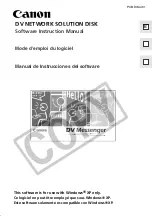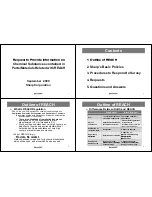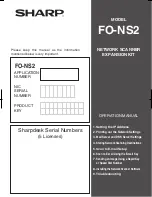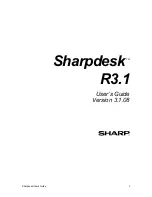
DDL Compiler Commands
Data Definition Language (DDL) Reference Manual — 426798-002
9 -104
TAL Command
tal-source-file
identifies the pTAL or TAL source file. If
tal-source-file
is omitted, DDL lists
the pTAL or TAL source code at the home terminal.
!
purges the contents of an existing pTAL or TAL source file before opening the file.
If the specified file does not exist, DDL ignores the exclamation point.
NOTAL
closes the currently open pTAL or TAL source file and stops translating subsequent
DDL objects. NOTAL is the default.
TAL Command Guidelines
The following points are guidelines for using the TAL command:
•
The specified pTAL or TAL source file must be an EDIT file, an unstructured file, or
a sequential device such as a terminal, a spooler, or a process. If the file exists but
is not one of these types, DDL issues an error message and does not open the file.
•
Only one pTAL or TAL source file can be open at a time. If you use the TAL
command when you already have a pTAL or TAL source file open, DDL closes the
current source file before opening the new source file.
•
If the pTAL or TAL source file already exists and the exclamation point is omitted,
DDL appends the DDL objects to the end of the file’s original contents. DDL does
not replace any existing objects.
•
The compiler can translate DDL objects specified in an OUTPUT statement only if
the dictionary containing these objects is open.
•
Each DDL object translated into pTAL or TAL source code is written to the pTAL or
TAL source file in a separate section that has the same name as the DDL object it
contains. You can suppress the generation of individual section headings with the
SETSECTION command.
•
DDL translates complex objects, such as group definitions and group records, into
pTAL or TAL STRUCT template declarations. DDL translates simple objects, such
as field definitions and records containing only one field and no groups, into simple
pTAL or TAL variables or into pTAL or TAL STRUCT declarations, rather than into
STRUCT template declarations. (But see
TALALLOCATE Command
on
page 9-106.)
•
DDL replaces any hyphen in a DDL name with a circumflex (
^
) before writing the
name to the pTAL or TAL source file.
•
Before writing a name to a pTAL or TAL source file, DDL does the following:
°
Appends ^DEF to every group definition name and record name (but not to any
field definition name)
Содержание DDL D40
Страница 36: ...Introduction to DDL Data Definition Language DDL Reference Manual 426798 002 1 14 Examining a Dictionary ...
Страница 66: ...Named Constants Data Definition Language DDL Reference Manual 426798 002 4 10 Standard SPI Constants ...
Страница 230: ...Dictionary Manipulation Statements Data Definition Language DDL Reference Manual 426798 002 8 14 SHOW USE OF Statement ...
Страница 370: ...Dictionary Maintenance Data Definition Language DDL Reference Manual 426798 002 10 24 Converting a Dictionary ...
Страница 456: ...Sample Schemas Data Definition Language DDL Reference Manual 426798 002 B 12 ASSNDDL Statements ...
Страница 470: ...DDL Data Translation Data Definition Language DDL Reference Manual 426798 002 C 14 ...
Страница 528: ...Dictionary Reports Data Definition Language DDL Reference Manual 426798 002 E 8 Requesting Reports ...
Страница 552: ...DDL Alignment Rules Data Definition Language DDL Reference Manual 426798 002 H 4 FIELDALIGN_SHARED8 Alignment Rules ...
Страница 576: ...Index Data Definition Language DDL Reference Manual 426798 002 Index 22 Special Characters ...
















































